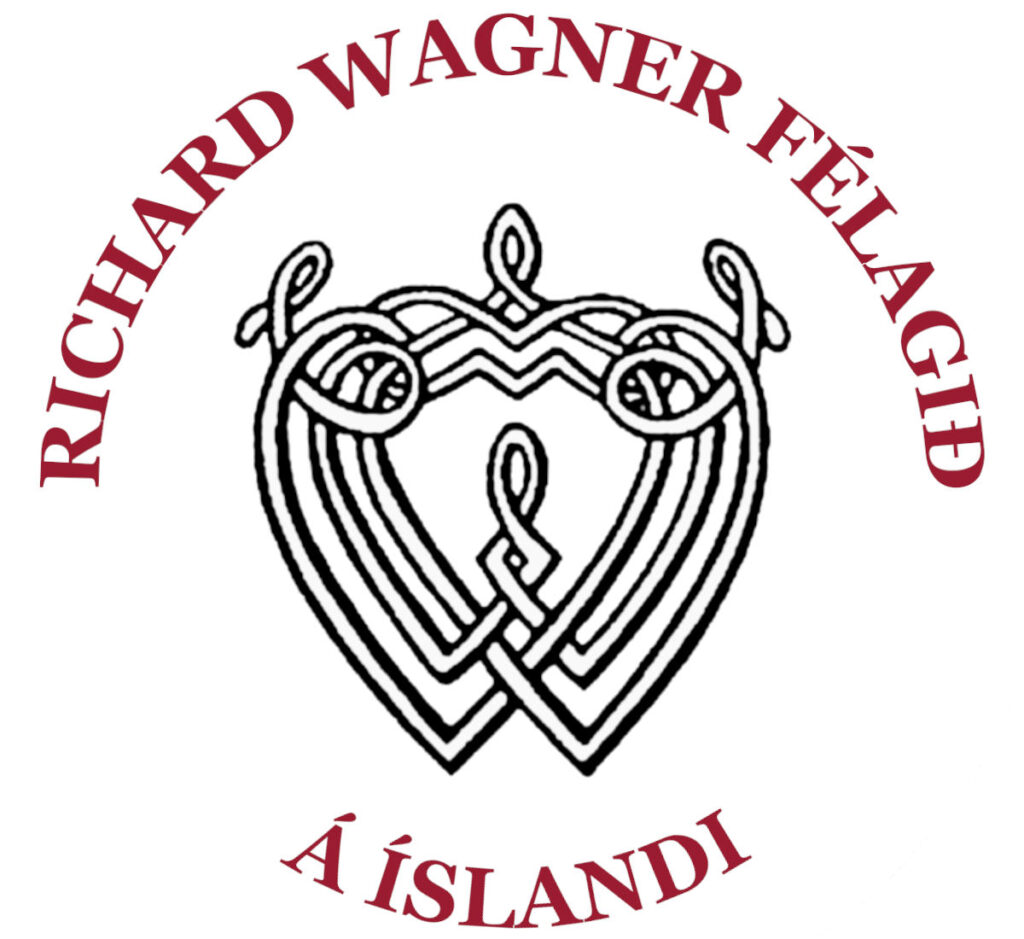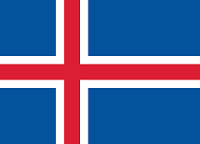Wagner og Völsungar
Formáli og inngangur
- Árni Kristjánsson. Hvað ertu tónlist?, 82.
- Rudolf Keyser. Nordmændenes Videnskabelighed og Litteratur i Middelalderen. Konrad Maurer. Ober die norwegische auffassung der nordischen literaturgeschichte. Ueber die Ausdriicke: altnordische, altnorwegische & islandische Sprache.
- Christopher Headington. Saga vestrænnar tónlistar, 302-303.
- Stefán Karlsson. Islandsk bogeksport til Norge, 1-17. Jon Gunnar J0rgensen. Islandske rffilmerker, 202-222.
- Árni Björnsson. Afhverju voru íslenskar fornsögur skrifaðar á móðurmáli?, 73-80.
- Faulkes. Two Versions of Snorra Edda.
- Sagaenbíbliothek des Skandinavischen Alterthums in Ausziigen.
Æviágrip Richards Wagners
- Gregor-Dellin, 34-35.
- Wagner. Mein Leben I, 46.
- Wagner. Samtliche Schriften XI, 1-124.
- Wagner. Mein Leben I, 190.
- Gregor-Dellin, 128,167.
- Wagner. Mein Leben I, 253-54.
- Gregor-Dellin, 171-72, 191-92.
- Wagner. Samtliche Schnfien II, 115-55; XI, 270-72.
- Halldór Laxness. Vettvángur dagsins, 7
- Wagner. Siimtliche Schriften XI, 273-324.
- Wagner. Siimtliche Schriften V, 66-85. Gregor-Dellin, 310-14.
- Wagner. Siimtliche Schnfien III, 178-206. Gregor-Dellin, 293-99. Jón Helgason. Tvær kviðurfomar, 20-80. Guðrún Þórðardóttir. Svanameyjar í Völundarkviðu, 72-78. Doku-mente, 36.
- Wagner. Samtliche Schriften III, 222-320; IV, 1-229. Gregor-Dellin, 322.
- Dokumente, 46-54,60. Gregor-Dellin, 359.
- Wagner. Mein Leben II, 60.
- Wagner. Mein Leben II, 330-32.
- Wagner. Mein Leben I, 5 Gregor-Dellin, 529-50,593-602.
- Gregor-Dellin, 676.
- Gregor-Dellin, 728.
Þróun þýskrar þjóðarvitundar
1. Klaus Böldl. Der Mythos der Edda, 13-15. Hagen Schulze. Kleine deutsche Geschichte, 43-45. Arthúr Björgvin Bollason. Ljóshærða villidýrið, 28-34.
2. Magnus. Historia de omnibus Gothorum Sveonumque regibus. Lohenstein. Großlmüthiger Feldherr Arminius oder Herrman. Böldl. Mythos, 15-21.
3. Heiberg. Théories antiques, 453-64. Huntington. Civilization and Climate. Guðmundur Finnbogason. Land og þjóð.
4. Charles Bouhour. Les entretiens d’Ariste et d’Eugene. Walch (útg.). Philosophisches Lexicon. Schwedische Bibliothec. Erstes Stiick, 24. Bonstetten. Der Mensch im Süden und im Norden. Böldl. Mythos, 22-26.
5. Zschackwitz. Erlüterte Teutsche Alterthümer. Schütze. Drei kleine Schutzschnften, 31-49. Majer. Germaniens Urverfassung, 24. Böldl. Mythos, 28.
6. Montesquieu. De l’Esprit des Loix. Espiard. L’Esprit des Nations. Kleffel. Abhandlungen, 11. Klaus von See. Völkisches Denken in Deutschland, 12-14. Böldl. Mythos, 25-27.
7. Schulze. Kleine deutsche Geschichte, 49-62. Böldl. Mythos, 31.
8. MacPherson. Fragments of Ancient Poetry. Percy. Reliques of Ancient English Poetry. Meynert. Staffel der Kultur, 1-2. Böldl. Mythos, 31-33.
9. Herder. Volkslieder I-II. Schiller. Deutsche Größe, 473-76.
10. Raupach. Der Nibelungen-Hort.
11. Dokumente, 15-17, 19-26, 75-77. Vischer. Vorschlag zu einer Oper, 397-436.
Íslensk fræði á þýskri grund
1. Edda Islandorum.
2. Íslensk fornrit XXVIII, xcix. Böldl. Mythos, 41-42.
3. Islandica V. Nordiska Kämpa Dater XI.
4. Snorra Edda. De Yfverborna Atlingars, eller, Sviogötars ok Nordmänners, … Edda. Hyperboreorum Atlantiorum, seu, Suiogothorum et Normannorum Edda.
5. Arnkiel. Cimbrische Heyden-Religion.
6. Mallet. Introduction à l’histoire de Dannemarc; Monumens de la Mythologie; Geschichte von Dänemark. Batka. Altnordische Stoffe und Studien in Deutschland, 67-83.
7. Snorra Edda. Die isländische Edda. Stettin 1777.
8. Gerstenberg. Briefe über die Merkwürdigkeiten der Litteratur, 153-57. Böldl. Mythos, 125-26.
9. Denis. Ossians und Sineds Lieder. Böldl. Mythos, 117-20.
10. Böldl. Mythos, 122-29. Herder. Iduna.
11. Böldl. Mythos, 129-34. Arndt. Geist der Zeit, 430. Jakob Grimm. Deutsche Mythologie.
12. Fichte. Reden an die deutsche Nation, 423.
13. Wilhelm Grimm. Altdänische Heldenlieder, Balladen und Märchen, ix-x, xvi-xxii, 427-30; Deutsche Heldensage, 4, 436. Jacob Grimm. Deutsche Mythologie. Vaulu-Spá. Leipzig 1830.
14. Böldl. Mythos, 151-59.
15. Óskar Bjarnason. Þegar Íslendingar urðu forfeður Þjóðverja, 53-88.
16. Grimms Wörterbuch IX, 471.
17. Ulrich Groenke. Fouqué, 94-101. Bjarni Thorarensen. Ljóðmæli I, 110-116; II, 118-124.
18. Fouqué. Sigurd der Schlangentödter, Held des Nordens. Böldl. „Götterdámmerung“, 366-67.
Sköpunarferli Hringsins
1. Wagner. Mein Leben I, 30.
2. Magee. Richard Wagner and the Nibelungs, 67. Böldl. „Götterdämmerung“, 368. Drewes. Die Ideengehalt von Richards Wagners dramatischen Dichtungen, 101-103.
3. Dokumente, 24,47. Westemhagen. Richards Wagners Dresdener Bibliothek, 99. Magee. Richard Wagner and the Nibelungs, 38-46.
4. Dokumente, 26.
5. Dokumente, 27. Wagner. Mein Leben I, 394-95. Mone. Untersuchungen.
6. Dokumente, 29.
7. Dokumente, 28.
8. Dokumente, 57-60, 77-78. Strobel. Skizzen, 262.
9. Dokumente, 51-52, sbr. 34.
10. Jakob Benediktsson. Hugtök og heiti í bókmenntasögu, 265-66. Das Hildebrandslied. Jón Helgason. Hildibrandskviða, 50-66. Fornaldarsögur II, 287-308.
11. Fouqué. Held des Nordens. Hagen. Die Edda-Lieder. Ettmüller. Die Lieder der Edda von den Nibelungen. Simrock. Die Edda. Wille. Fünfzehn Briefe Richard Wagners, 27. Magee. Richard Wagner and the Nibelungs, 50-52.
12. Wiessner. Der Stabreimvers in Richard Wagners „Ring des Nibelungen“. Þorsteinn Gylfason. Richard Wagner as a Poet, 77-86. Jóhannes Jónasson. „Vituð ér enn…“. Lesbók Mbl. 19. des. 1998,20.
13. Kudrun. Halle a. S. 1902.
14. Dokumente, 19. Fouqué. Sigurd, 45-47. Böldl. „Götterdämmerung“, 366-69. Kühnel. Richard Wagners ‘Ring des Nibelungen’, 26.
15. Sørensen. Griechische und nordische Mythologie als Inspirationsquellen Richard Wagners, 1-24. Sabor. Richard Wagner. Der Ring des Nibelungen, 78-79.
16. Lied vom Hümen Seyfrid.
17. Magee. Richard Wagner and the Nibelungs, 15. „It will also be noted that our subject is the influence of the Nibelung activity of Wagner’s contemporaries, not of the primary sources – the Völsunga saga and Eddas, the Nibelungenlied, Das Lied vom Hüirnen Seyfrid, and Thidreks saga – themselves. These latter have already been widely, if not fully comprehensively, dealt with by others.“
Frumgerð og lokagerð
1. Karl Lachmann. Zu den Nibelungen und zur Klage, 339-345.
2. Magee. Richard Wagner and the Nibelungs, 60-61, sbr. 44-46.
3. Wagner. Mein Leben I, 30,394-95. Dokumente, 57-58, 64.
Niflungahringurinn
1. Grimms Wörterbuch VII, 481. Ásgeir B1. Magnússon. Íslensk orðsiflabók, 667.
2. Das Lied vom Hiirnen Seyfrid, 12-15. og 164-168. erindi.
3. Íslenzk fornrit XXIV, 3.
4. Íslenzk fornrit XXVI, 12-13,18.
5. Simek. Hugtök og heiti í norrænni goðafræði, 248-49.
6. Fornaldarsögur I, 115-116
7. Jakob Grimm. Deutsche RechtsalterthUmer, 87nm.
8. Íslenzk fomrit II, 181; XII, 221-22, 447; XXVII, 202; XXVIII, 387.
9. P.E. Müller. Sagaenbibliothek, 87. Snorri Sturluson’s Weltkreis I-II. Snorri Sturluson. Heimskringla. Sagen der Könige Norwegens von Snorre Sturlason. I. Band.
10. Westernhagen, 104. Schimmelmann, 82-87. Herder. Volkslieder I, 166-71. Íslenzk fomrit XXVI, 193-97; sbr. XXIX, 77-79.
11. Jakob Grimm. Deutsche Mythologie 1854, 393; sbr. Ettmdller, Völuspá 1, 56.
12. Walter Hansen. Die Spur der Helden, 48.
13. Hugo Gering. Kommentar zu den Liedern der Edda, 163-64. Simek. Hugtök og heiti í norrænni goðafræði, 81.
14. Grimm. Kinder- und Hausmärchen, gesammelt durch die Brüder Grimm, 27-28. Dokumente, 42.
15. Grimm. Kinder- und Hausrnärchen, 240 Þjóðsögur Jóns Árnasonar I, 43-44.
16. Uhlands Gedichte und Dramen II, 218-19.
17. Westernhagen, 102. Íslenzk fornrit VI, 22-23.
18. Fornaldarsögur II, 104-106.
Samantekt og endurlit
1. Nýlegt dæmi má sjá í leikskrá Rínargullsins frá Kungliga teatern í Stokkhólmi árið 1997. Gunilla Petersén: Richard Wagner och Nibelungernas ring. Rhenguldet, bls. 12-15.
Wagner og Íslendingar
1. Þjóðólfur 1876, 126.
2. Matthías Jochumsson. Sögukaflar af sjálfum mér, 242.
3. Skírnír 1884, 101.
4. Benedikt Gröndal. Ritsafn. Fjórða bindi, 234, 563.
5. Þjóðólfur, 2. október 1896.
6. Valgerður Benediktsson. Frásagnir um Einar Benediktsson, 36-37. Ingólfur, 28. febrúar 1904. Guðjón Friðriksson. Einar Benediktsson. Ævisaga I, 269-270. Einar Benediktsson. Ljóðmælí II, 80.
7. Vísir, 29. júlí, 1. ágúst, 21. ágúst 1911. Pétur Jónsson óperusöngvari, 60.
8. Hljómlistin 1913, 48-51.
9. Morgunblaðið, 12., 15. og 17. feb. 1933. Heimir, mars 1939, 30; júní 1939, 40-41.
10. Pétur Jónsson óperusöngvari, 187, 189.
11. Theodór Árnason. Tónsnillingaþættir, 225-229. Alþýðublaðið, 7. júli 1953, 5. Morgunblaðið, 8. október 1953, 7.
12. Ólafur Hansson. Mannkynssaga handa æðri skólum, 168-69.
13. Árni Kristjánsson. Með Wagner í Bayreuth, 75-87.
14. Niflungahringurinn. Leikskrá. Listahátíð í Reykjavík 1994. Árni Tómas Ragnarsson. Richard Wagner, Bayreuth og Íslendingar. Óbirt grein.

